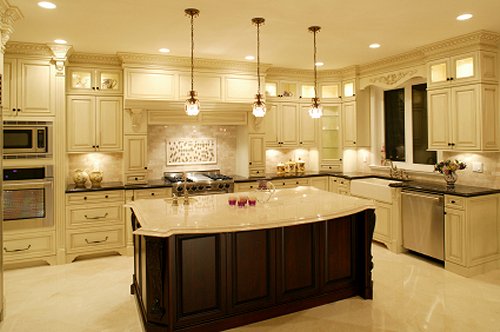 A home’s lighting can set a home apart and can also help those living in the home have a productive and soothing environment depending on what is the focused goal of the home. Homes need light to get from one end to the other safely. But lighting can also add so many elements to enhance the living experience for the homeowners. The first step is to understand how your home will be used and what lighting needs you have for your home. For instance, do you work outside the home during the day and need light during the evening? Do you have children that are afraid of the dark and need special lighting or children that need work spaces to finish homework? Maybe you have a home office and need the office to function during a variety of times.
A home’s lighting can set a home apart and can also help those living in the home have a productive and soothing environment depending on what is the focused goal of the home. Homes need light to get from one end to the other safely. But lighting can also add so many elements to enhance the living experience for the homeowners. The first step is to understand how your home will be used and what lighting needs you have for your home. For instance, do you work outside the home during the day and need light during the evening? Do you have children that are afraid of the dark and need special lighting or children that need work spaces to finish homework? Maybe you have a home office and need the office to function during a variety of times.
Lighting Goals and Natural Light
Identifying your lighting goals will help you establish the type of lighting you need. So understanding how you will use each room in your home and when will determine light functionality. Remember to also account for seasonal light situations. The next step is to identify your natural light during all times throughout the day. If you have a lot of nature light during the day and have a working home office, then you may need less lighting to be productive. If you have very little natural light when you are in the home, you will need more lighting to function. Adding lights to enhance your natural light experience will help determine your goals.
Lighting Around the Room
Now that you know your lighting goals and your natural light element, its time to map out how to incorporate light into your home. Overhead lights are great for high ceilings and to illuminate a room overall. To set ambiance, incorporating dimmer switches that can help temper these overhead lights during special events. Overhead lights can also help light up big rooms. However, some rooms may need more light depending on how the room will be used. Maybe a large room has overhead lighting but these are not necessary when reading a book close by and a simple table lamp will work. Table and floor lamps can also add dimension to a room when a room is fully lit.
Understanding Specific Light Usage
When you establish your home’s purpose, you will also learn more about your lighting goals. You may have specific tasks that require task focused lighting elements. Are you a serious cook and need specific stove and under counter lights to see the specifics of what you are cutting and cooking? Do you have a home office and need desk lamps to get your work done? Do you have small children that are afraid of the dark and require night lights or low level lighting? You may encounter safety concerns and add more switches throughout your home enabling you to be in a lit area of your home at all times. Maybe you have art that you want to highlight that could benefit from low wattage lighting specifically shining on the piece of artwork to bring attention to the piece. Understanding these little details will help you add functional and ambiance light around the home.
Room Details
If you feel you are not getting enough light with the layers of lighting you are incorporating into your rooms, try specific types of bulbs where some bulbs are brighter than others and wattage might need to be higher or lower to reach your lighting needs. Additionally, try using lighter paint colors on walls. Lighter walls can make a room appear brighter than rooms with darker colors on the walls. When lighting your home remember to watch out for glare from lights. Reducing light wattage can reduce glare or moving a light to a new position can also help to reduce glare. Additional lighting can be added to homes with table, floor and desk lamps to create more light. The challenge will be are you able to create a lighting environment that enhances the look and feel of your home. For some unique lighting ideas, visit the HomeZada lighting board on Pinterest.

